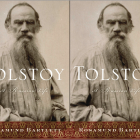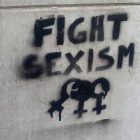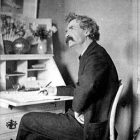Writing Lessons: Brendan Mathews
In our Writing Lessons series, writing students—and this month, writing instructors!—will discuss lessons learned, epiphanies about craft, and the challenges of studying and teaching writing. This week, we hear from Brendan Mathews, a writing and literature instructor at Bard College at Simon’s Rock. You can follow him on Twitter @Mathews_With1T. —Andrew Ladd, Blog Editor
 One observation I try to impart to my undergraduate writing students is this: you have never read a first draft. Not in any book or magazine. Not in the books assigned for your literature courses. Not in any of the novels or stories you loved growing up. Nothing published between two covers was a first draft. All of it has been revised, reworked, rethought, reimagined, re-everything’ed since those first words were scribbled in a notebook, scratched on parchment, banged out on a typewriter, or trilled on a laptop keyboard.
One observation I try to impart to my undergraduate writing students is this: you have never read a first draft. Not in any book or magazine. Not in the books assigned for your literature courses. Not in any of the novels or stories you loved growing up. Nothing published between two covers was a first draft. All of it has been revised, reworked, rethought, reimagined, re-everything’ed since those first words were scribbled in a notebook, scratched on parchment, banged out on a typewriter, or trilled on a laptop keyboard.
I tell them this as a way to overcome their sometimes wildly self-critical/self-satisfied outlook on their own writing. They often think they have to “get it right” on the first try—that once the muse speaks to them, the words will flow, perfect and exact. If that doesn’t happen, the story is a bust. If it does, then it’s eternal literary glory.
This belief in the Perfect First Draft has at least two major drawbacks:
- Reason #1: “I can only write when I’m inspired,” which often means not writing at all, since the muse seems to be otherwise occupied inspiring Zadie Smith. But the muse doesn’t visit those who don’t respect the process—who don’t value their own art. Inspiration, I say, is a reward for hard work. And more practically: if you don’t have the skills to write a good story, inspiration will be wasted on you. You’ll have the will but not the way.
- Reason #2: “It is what it is,” or the inability to revise. When the muse’s words are sacred and unalterable, you’re trapped with your first draft. Changes come only the form of tweaks—copyedits, essentially. But the best work, the work that turns a draft into a story, occurs after the first draft is written. You pull the scenes apart, change the tense, switch the point of view. You allow yourself to be inspired by what you’ve already created—a first draft with real potential—and you experience subsequent rounds of inspiration as a reward for your deep engagement with the possibilities latent in your own work. This is how first drafts become second drafts become third drafts become…
I have seen students paralyzed by the thought of revision. They contemplate their story like it’s a shaky tower that will collapse, Jenga-like, if one piece is removed. But what if you start pulling pieces and it stands, more breathtaking for its gravity-defying audacity? And what if it does collapse? What else—what better, truer, more interesting structure—can you build with these pieces?
These are the questions faced by every writer in the anthologies, novels, collections, and magazines we read in workshop. The first draft is the necessary statement. But revising it into something great allows you to keep asking the questions that motivate any writer: what if? And what then? And then what? And what else?
To submit your own essay to Writing Lessons, read our guidelines here.



